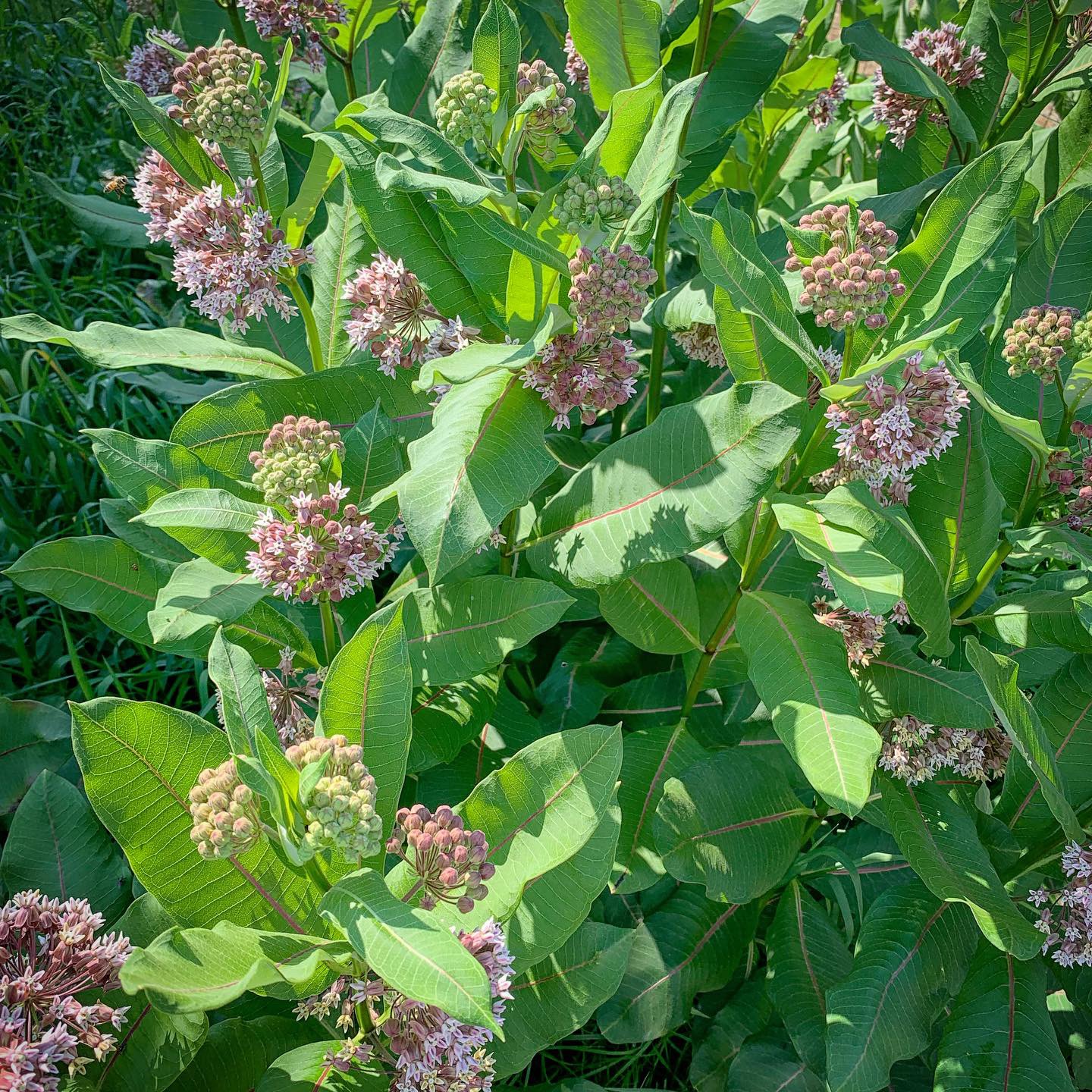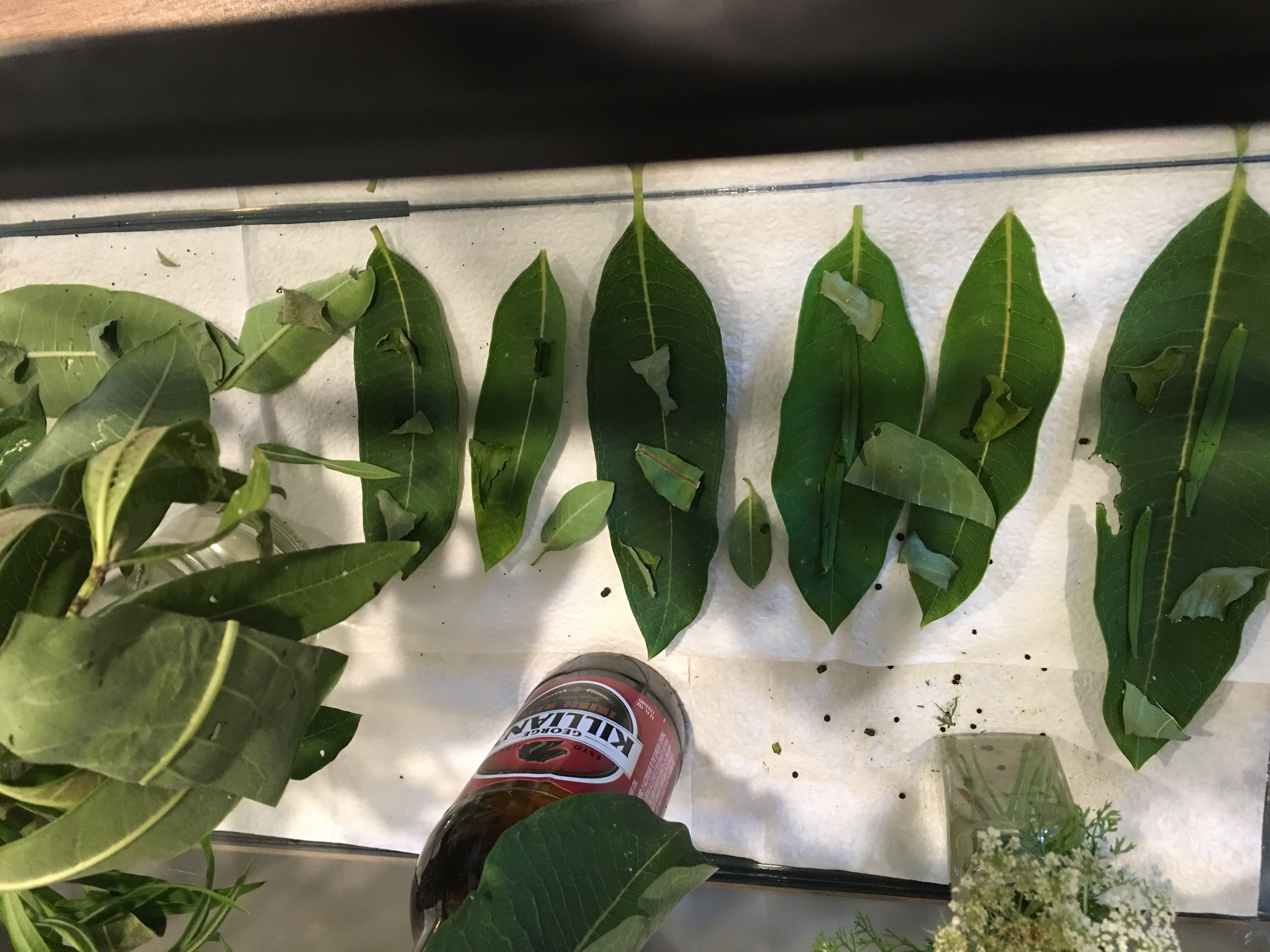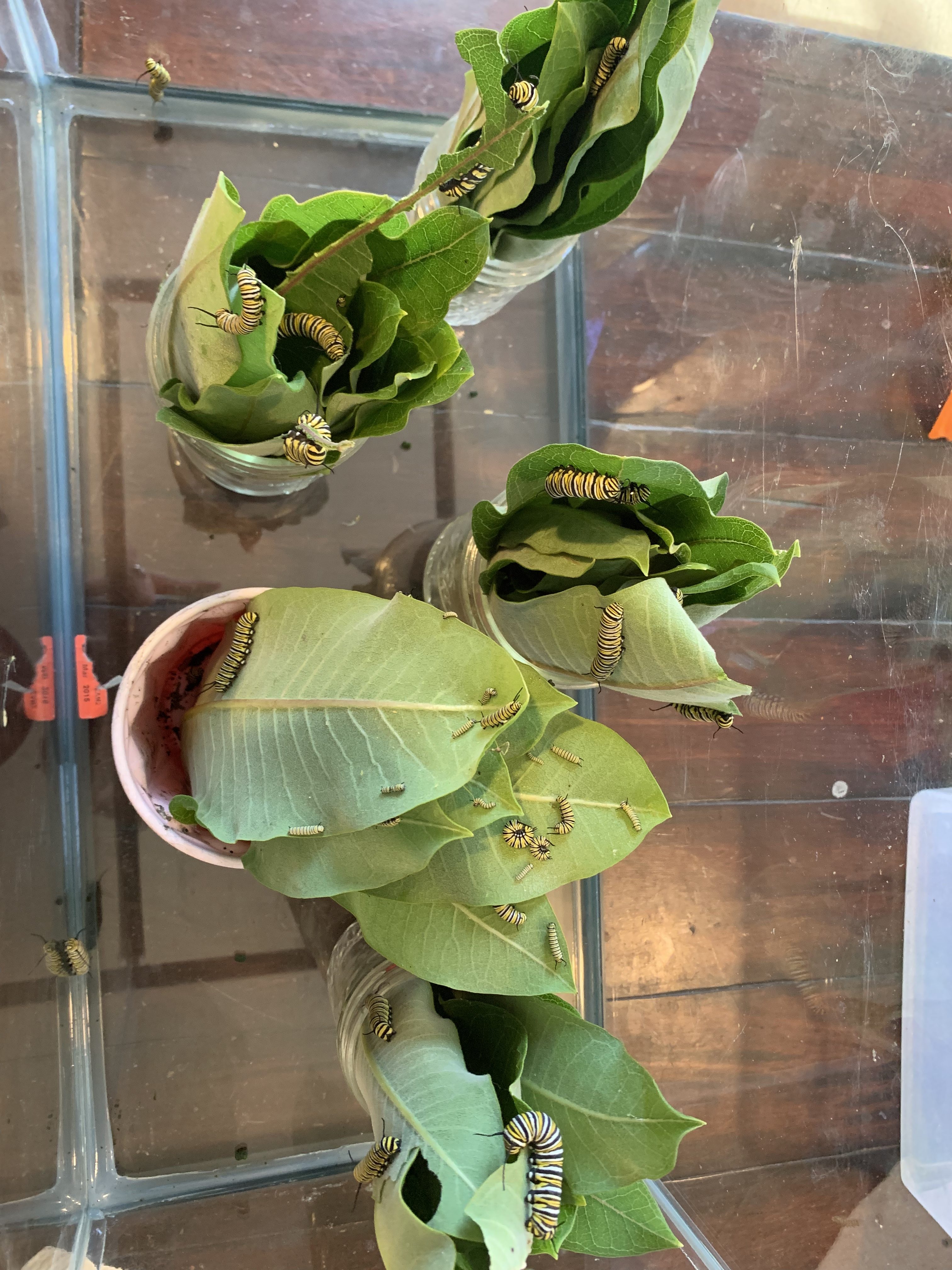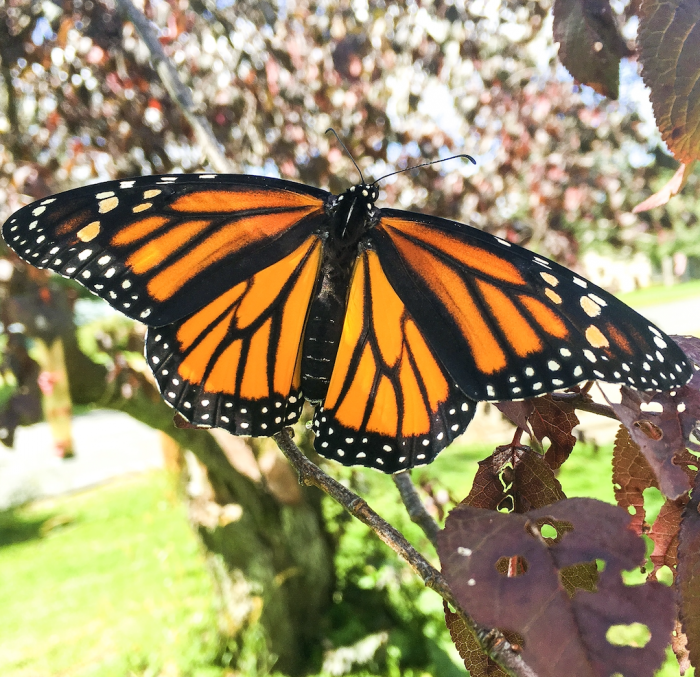Seeing a Monarch used to be quite common, but now, they are in trouble.
Their numbers are declining rapidly. In fact, their numbers have decreased by 90 percent in just 20 years. In California, in just one year, their numbers dropped 86 percent.
These butterflies are marvelous creatures. They are the only insect that migrates to a warmer climate. In fact, National Geographic says, “It’s one of the greatest natural events on Earth.”
The butterflies that hatch in North America in the late summer will migrate the entire way to Mexico, a journey that is around 3,000 miles. From Mexico back north, it can take up to five generations to reach their final destination, which means four or five different butterflies make the trip.
And the butterflies that fly south to Mexico? That’s almost a different butterfly species altogether from the ones that travel north. The life span of the butterflies making their way north is five to seven weeks, but the Monarchs that hatch in the North survive eight months. Nobody can explain this phenomenon which makes it all the more interesting to me. And these Monarchs, the ones with the long life span and the single migration all those miles, they are the ones in trouble.
Monarchs are pollinators, an essential component to our ecosystem, and they need our help. Just like the bees.
I raise and release monarchs, but 10 years ago, I didn’t know a single thing about butterflies. My husband has always collected monarch caterpillars to observe their metamorphosis.
For Father’s Day, six years ago, I gifted him a kit with painted lady butterflies. I didn’t know much about butterflies or pollinators at that point, but he showed me how to find monarch caterpillars and taught me about milkweed. That is when we began raising a handful, seven or eight, monarchs a year.
This year, I was determined to double that number. We saved all the milkweed that was growing around our property for the females to have plenty of options to lay their eggs and have food. Last year, I didn’t find any monarch eggs until late August. This year, I started in the middle of July, and my intake is already over 200.
A female Monarch will lay up to 500 eggs; one single egg at a time. Of all those eggs laid, only one or two per 100 survive to complete the full metamorphosis.
Given those statistics combined with the statistics that these late monarchs are endangered, I wanted to do something in my little corner of the world to save the Monarchs.
Here’s what you need to know about saving the monarchs and helping them thrive:
1. Monarch caterpillars eat milkweed, and the butterflies lay their eggs on its leaves. There are many species of milkweed, but a little research to see what grows best in your area is the first step.
2. Plant some native milkweed. Without it, there are no monarchs. Part of the reason they have been struggling is because of the decline of milkweed. Humans have eliminated so much natural landscape because of our need to have manicured lawns, mowed down fields, and building after building without so much as a thought of the ecosystems within the landscapes being destroyed. Monarchs are one of the many species affected by this greedy behavior. Climate change, unsurprisingly, also has a great role in milkweed decline. So plant it, save it, protect it.

3. Once you have established milkweed plants, it may take a little while for monarchs to discover, but don’t give up hope. An added bonus to common milkweed is its intoxicating fragrance. When it flowers, your senses are in for a treat. We have a patch fenced off in our front yard that has doubled in size. Still, though, I find most of my monarchs next door, at my in-law’s house. Because the butterfly offspring return to the same locations as the butterflies before them, their milkweed is full of life since it has long been established. I have seen more monarchs on my patch this year, though, and know that number will keep increasing in years to come.
4. Milkweed is poisonous to most things. Because this is the diet of the monarch, they, too, are poisonous to most things. However, some creatures can tolerate it. A monarch caterpillar who has just hatched has predators on the underside of those green leaves—ants and aphids and ladybugs, to name a few. Some birds can tolerate the caterpillars even when they are large but to most, they will make them very sick. These predators are a large reason that the survival rate is so low. This is why I bring eggs inside my house to hatch.
5. The monarch lays a very small, white egg, that upon close inspection, looks similar in shape to the egg of a chicken. It is round on the bottom, where it rests on the leaf, and gets narrower at the top. They are pretty easy to spot if you know what you are looking for. I immediately found over 20 eggs and some caterpillars too. It was earlier than I have ever found them before. Sometimes, though I have checked each leaf, I will find a caterpillar that has hatched. Sometimes they are not freshly hatched and quite large, other times they are so small, some people would need a magnifying glass to see them.
6. The larger eggs have a higher chance of survival, but I still collect all of them. There are dangers that prevent them from making it through their transformation. Those dangers aren’t present in my home. The tiny ones are the ones that have the worst odds. Even the larger caterpillars may eat them while munching on leaves.
7. When I am on a Monarch hunt, I bring along a cup with me. Any egg I find, I tear off the section of the leaf containing the egg and place it in the cup. Any caterpillar I find, I tear off the entire leaf and add it. It takes me about an hour and a half to search all of the milkweed around the house, but each day, I find more eggs and caterpillars. Once I have finished my search, I bring my cup inside and divide it up. Eggs go on a plate to be monitored multiple times throughout the day. Caterpillars go to, what we have dubbed, the “Scrapiary” or, sometimes, “Hotel Catafornia.” More on that later.

8. When the egg is getting ready to hatch, it changes color from white to translucent with a dark tip. It typically takes three to five days for an egg to hatch, but once the tip is dark, it will happen quickly. Some eggs won’t hatch at all, but I have had this happen only a couple of times.
Once they hatch, the caterpillar will eat the egg and begin munching on milkweed. Because of this, I monitor the eggs very closely to ensure I can move them to fresh milkweed as soon as possible. When I bring the eggs in on the pieces of ripped off milkweed, the leaves dry up and become crunchy. It isn’t what a freshly hatched caterpillar will eat. I move them to fresh leaves that I have placed in a bowl. All of the babies start their lives separately from the larger caterpillars so they don’t get eaten by a caterpillar who is chowing down. They don’t enter “Hotel Catafornia” until they are large enough to not get eaten.
9. The “scrapiary” was made by my husband using scraps of different materials he had in the basement. It is a wooden frame wrapped in some leftover plastic he had saved. Eventually, it will have doors on the front to allow easier access to the inside, but right now, it is just open. It contains a shelf that holds an aquarium where we keep canning jars with milkweed and all of the caterpillars that are larger. The aquarium has a lid to keep them from roaming the house. Above the shelf are two rows of two horizontal pipes which allow me plenty of room for moving chrysalises.
10. Watching the caterpillars grow is so interesting. They just eat. And eat. They continue eating until they are a certain size and something in them knows it is time to stop eating. Along the way, they will shed their skin when they need more room to grow larger. The first time I saw this I was worried I had lost one; it looked lifeless and as something had injured it. But like magic, the next time I looked it was moving around, full of life, and behind it was a piece of brown, dried up skin.
11. The caterpillars will eat a ton of milkweed. With just a few caterpillars, it is easy to keep up with. A couple of fresh leaves every day, sometimes twice a day at the end of their caterpillar existence, and they are good. Having many caterpillars requires fresh leaves multiple times a day. Just this morning I brought in 20 or more leaves and will need to refill it before the day is done.
They are made to devour these plants. I used to bring in whole plants for them, but now, I pick and choose leaves off of many plants, leaving them behind for more eggs to be laid. Leaving the plants as they also have another advantage; they are able to flower and go to seed, creating a pod full of seeds that will produce even more plants. I try to pick the leaves that aren’t as tender for the older ones and the most tender leaves I give to the babies.

12. The fun part really starts happening once the caterpillars are grown. They will start crawling all over, looking for a place to attach to form their chrysalis. It is convenient to have something enclosed if you are bringing them inside because otherwise you may find a chrysalis hanging from your ceiling, a door jam, or even in a bookshelf. I may be speaking from experience here. We had chrysalises formed all over our house last year. This year, it is more contained, but I also am seeing more damaged chrysalises so we need to tweak our system a bit due to the number of chrysalises being formed at once.
13. The transformation from caterpillar to chrysalis is an event in and of itself. The caterpillar, now many times larger than when it first hatched, will stop eating and begin preparing for the first part of their transformation.
They produce a silk from their mouths, similar to a spider. The silk allows them to hang upside down. “We’ve got a hanger!” My kids love to yell when they find a new one. When the caterpillars hang, they form the shape of a “J.” Once this happens, it won’t be too long until a chrysalis is formed. I have caught many transformations on camera. They shed their skin and beneath the skin wriggles out a bright green body. After a while, the chrysalis is completely formed—smooth, green, and gold, and completely amazing.

14. Since the majority of our chrysalises hang on the underside of the aquarium lid, I move them to a place that’s a little less crowded.
“Hotel Catafornia” has a series of pipes for this exact purpose. To move a chrysalis, you need a safety pin and some unwaxed dental floss as well as somewhere to relocate it. My husband will hold the lid while I carefully remove the chrysalis with the safety pin. To do this, you need to not hit the chrysalis while getting the safety pin under the silk. You may be able to see where the silk is.
I typically run the pin against the surface they are hanging on and gently pull it away. A large patch of silk should pull with the safety pin. Once removed, run the silk, still attached to the chrysalis, between your fingers to fuse it all together. Take a long piece of dental floss and tie a double or triple knot around the silk, near the top of the chrysalis. Then you can tie it around something that will allow it to still hang naturally.
15. In 14 days, your butterfly will emerge. The chrysalis will begin to change color a day or so before it hatches and you should be able to clearly make out the wings. The entire chrysalis will darken when it is close to emerging. Once emerged from the chrysalis, the butterfly will not look very much like the monarch you know. The wings will be tiny, the abdomen huge.
The butterfly needs to flap its wings to get the blood flowing and you will see them get larger and larger as this process continues. Once they really start moving around and flapping their wings a lot, we bring them outside for a safe release. You must be careful to not touch the wings. We simply slip our finger under their legs so they grab on to our skin and hang naturally from our finger. Once they are ready, they will fly right off the tip of our finger, without so much as a goodbye!

There are a lot of really great ways to help the monarchs without bringing them into your home. You can do this in a couple of ways.
One way that we do this is letting some parts of our property grow over. It looks like a hot mess, but believe me, when you realize how many creatures you are helping, it is so worth it. Even weeds are beautiful when they flower, and they are necessary for the life of our pollinators.
Another way is to plant a butterfly garden. This will be beneficial to many types of pollinators. Butterfly gardens are usually bursting with beautiful blooms and are a much more controlled way to provide food for them. We need to be planting milkweed, though.
To specifically help monarchs, please find the type of milkweed that is best for your area. It is not recommended to buy monarchs from a commercial breeder. They can carry diseases that would then be introduced to your native butterflies. Providing monarchs the habitat they need will do so much more for their population.
Some people may be skeptical, some sources will say that this is more damaging than helpful, loved ones may think you are crazy, but one person can make a big difference. One small patch of milkweed can bring hundreds of monarchs, and since they are so beautiful anyway, why not?
~
1. https://www.biologicaldiversity.org/species/invertebrates/monarch_butterfly/
2. https://www.cnn.com/2019/01/07/us/monarch-butterflies-decline-trnd/index.html
3. https://www.nationalgeographic.com/news/2017/10/monarch-butterfly-migration/


 Share on bsky
Share on bsky





Read 0 comments and reply